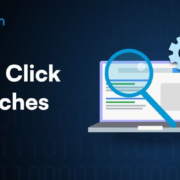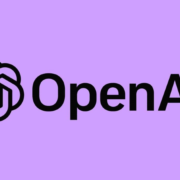AI Search Engines Prioritize Backlink Quality for 2025 SEO Success – WebProNews
In the evolving world of search engine optimization, backlinks have long been a cornerstone of digital visibility. But as artificial intelligence reshapes how search engines process and rank content, questions arise about the enduring value of these links. A recent analysis by growth strategist Kevin Indig, published in Search Engine Journal, delves into this by examining over 35,000 data points from AI-driven search results. The study reveals that while traditional link-building tactics aren’t obsolete, AI systems evaluate them through a more nuanced lens, prioritizing quality and relevance over sheer volume.
Indig’s research compared visibility in AI search tools like Perplexity and ChatGPT against conventional Google results. By analyzing factors such as domain authority, link diversity, and even nofollow links—often dismissed in classic SEO—the study uncovered surprising patterns. For instance, sites with a broader range of linking domains, including those from social media and directories, performed better in AI responses, suggesting that algorithms now favor contextual signals that mimic human judgment.
The Shift Toward Quality Over Quantity in AI Link Evaluation
This finding aligns with broader industry shifts. According to a report from Research FDI, AI is transforming SEO by emphasizing user intent and content depth, which indirectly boosts the importance of authoritative backlinks. In Indig’s dataset, pages with high-quality, diverse links appeared in AI summaries 20% more frequently than those relying on quantity alone. This indicates a departure from the old “more is better” mantra, urging SEO professionals to focus on earning links from trusted sources in related niches.
Moreover, the analysis highlighted the unexpected role of nofollow links, which don’t pass traditional SEO value but signal popularity in AI contexts. Sites with a mix of follow and nofollow links saw enhanced visibility, as these elements contribute to a site’s overall “trust graph” in machine learning models. This insight challenges long-held beliefs and encourages a holistic approach to link acquisition.
Integrating Structured Data and Semantic Richness for Enhanced AI Visibility
Building on this, current news from WebProNews emphasizes the need for structured data like schema markup to help AI parse link contexts effectively. Indig’s data supports this, showing that domains with rich semantic links—those embedded in meaningful content—outperformed others by up to 15% in AI-driven queries. For industry insiders, this means auditing link profiles not just for numbers but for narrative coherence, ensuring links tell a story of expertise and reliability.
Posts on X (formerly Twitter) echo these sentiments, with users like SEO experts discussing how tools like Link Analyzer agents are optimizing for AI by checking link safety and relevance. One such post from GriffinAI highlights AI agents that automate this process, aligning with Indig’s call for data-driven strategies. This real-time buzz underscores the urgency for brands to adapt, as AI search tools gain traction.
Challenges and Opportunities in Adapting SEO Strategies for 2025
However, challenges remain. The Search Engine Land article on AI reshaping SEO notes the fragmentation of search behaviors across platforms, complicating link strategies. Indig’s study warns that over-reliance on low-quality links could penalize sites in AI rankings, where algorithms detect manipulative patterns more astutely than ever.
Opportunities abound for those who pivot. By leveraging tools like generative engine optimization (GEO), as detailed in Writesonic’s blog, companies can enhance link value through in-depth, authoritative content. Indig’s analysis, corroborated by a Startup News FYI piece, suggests that diversifying link sources— including from emerging AI platforms—could be key to future-proofing SEO efforts.
Practical Steps for Implementing AI-Optimized Link Building
For practitioners, Indig recommends starting with comprehensive audits using tools that simulate AI weighting. This involves analyzing link velocity, anchor text diversity, and topical alignment. Recent updates from Google Search Central reinforce this by advising creators to focus on unique value, which naturally attracts superior links.
In conclusion, as AI continues to refine search mechanics, Indig’s deep dive into 35,000 data points serves as a roadmap. It urges a sophisticated, quality-focused approach to links, blending traditional tactics with emerging AI insights to maintain competitive edges in digital discovery.
Subscribe for Updates
The AITrends Email Newsletter keeps you informed on the latest developments in artificial intelligence. Perfect for business leaders, tech professionals, and AI enthusiasts looking to stay ahead of the curve.
Help us improve our content by reporting any issues you find.
Get the free daily newsletter read by decision makers
Get our media kit
Deliver your marketing message directly to decision makers.











